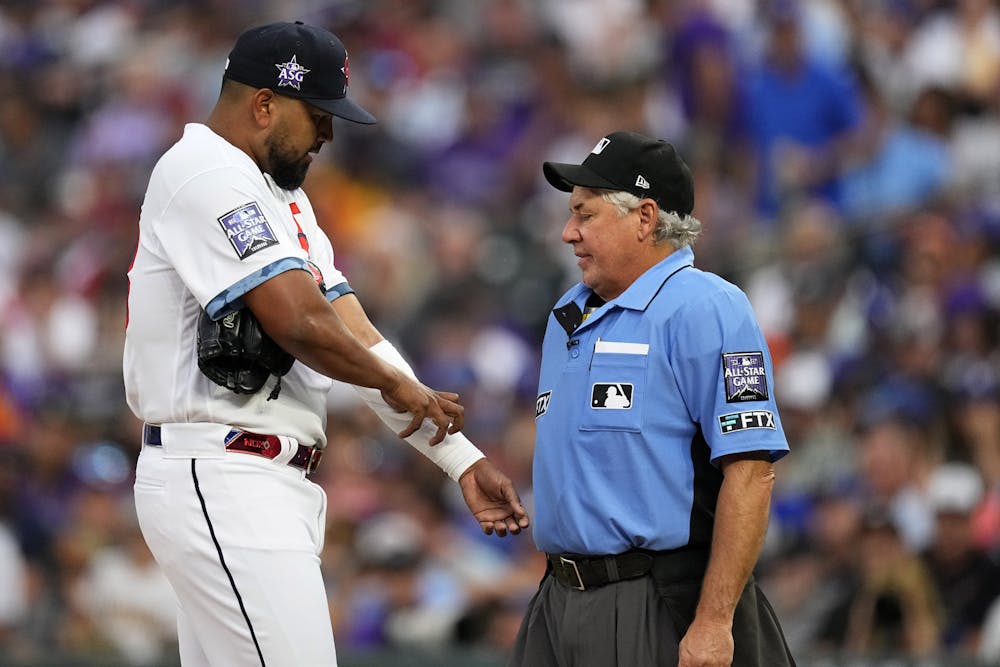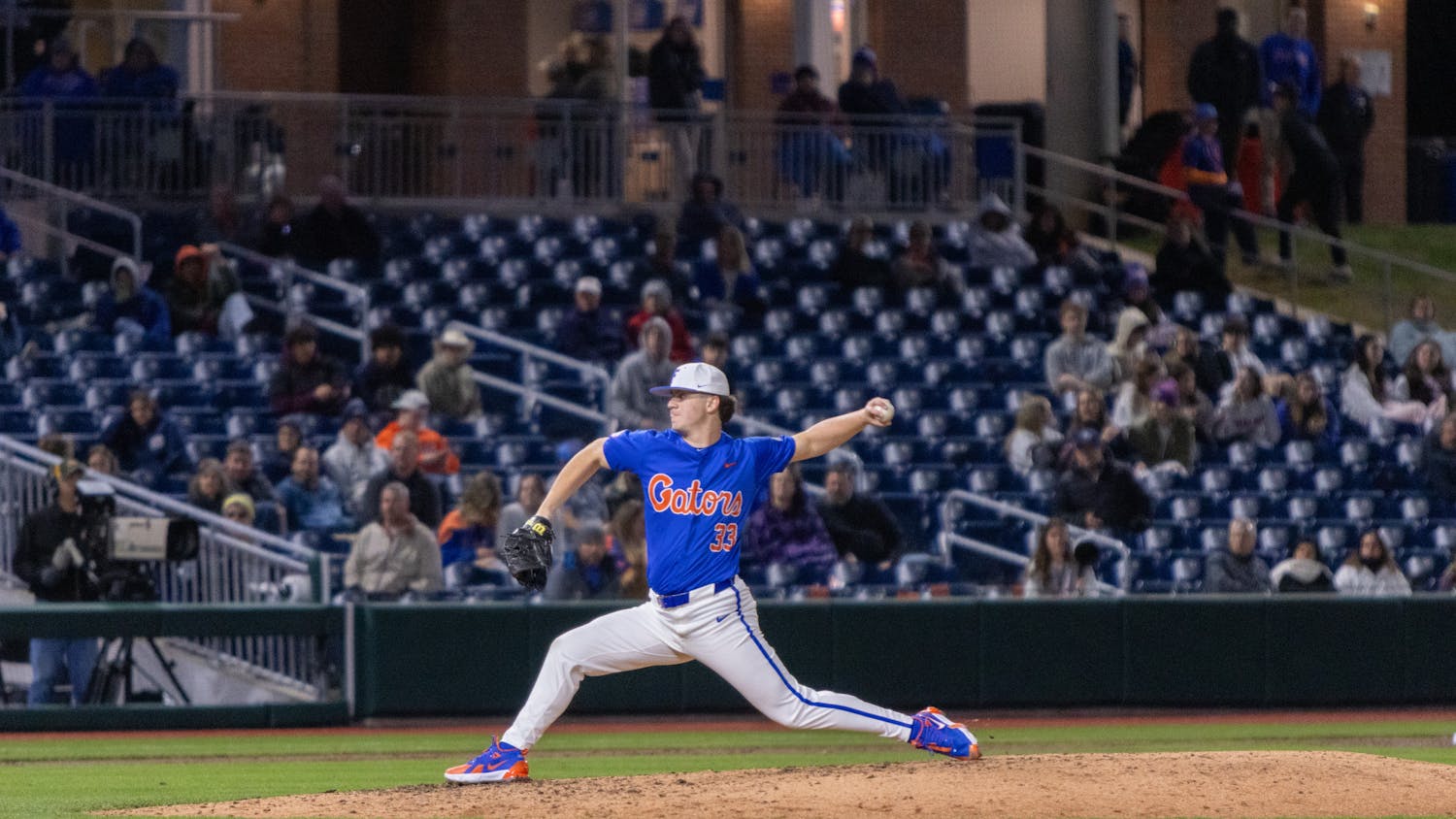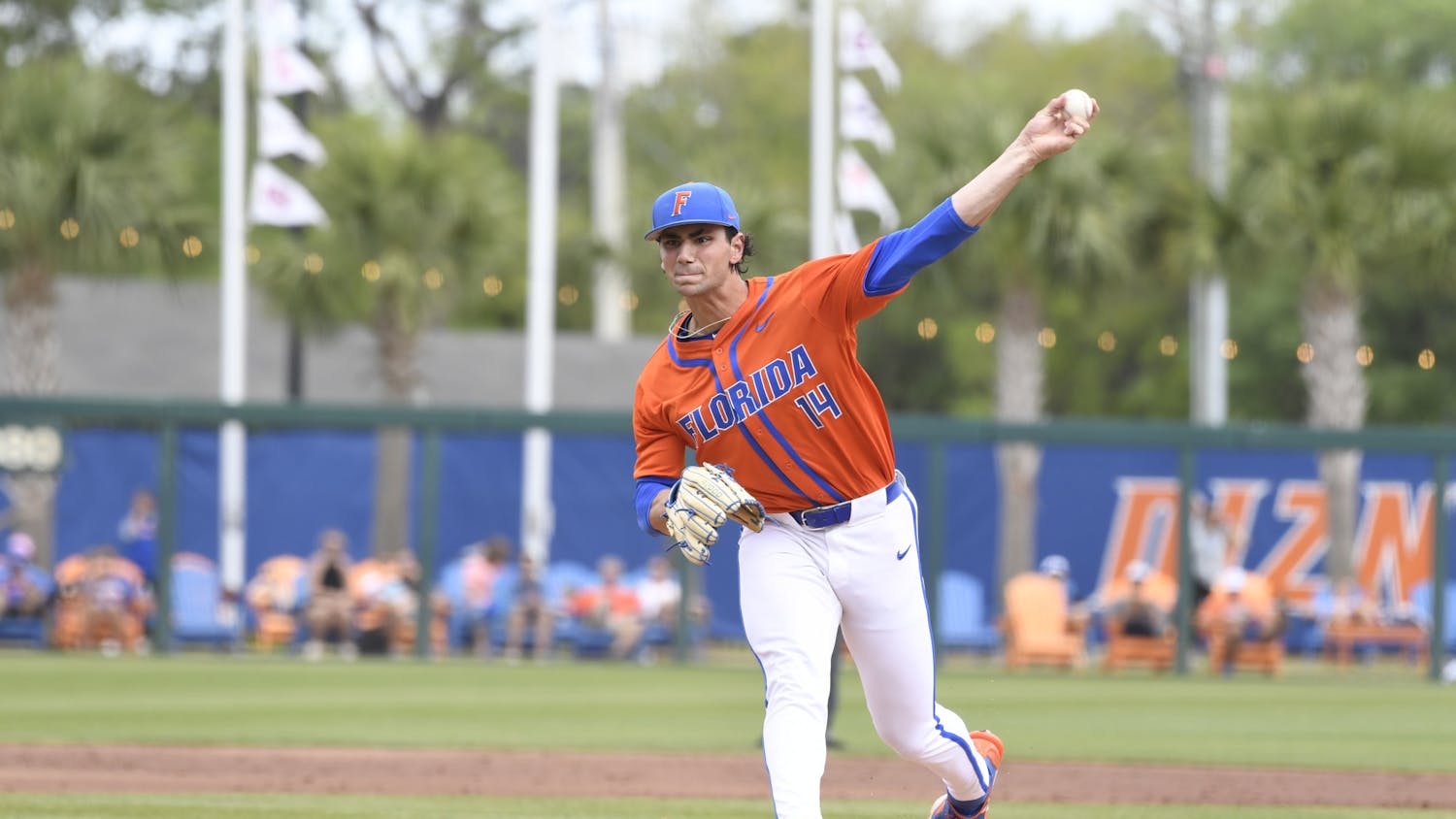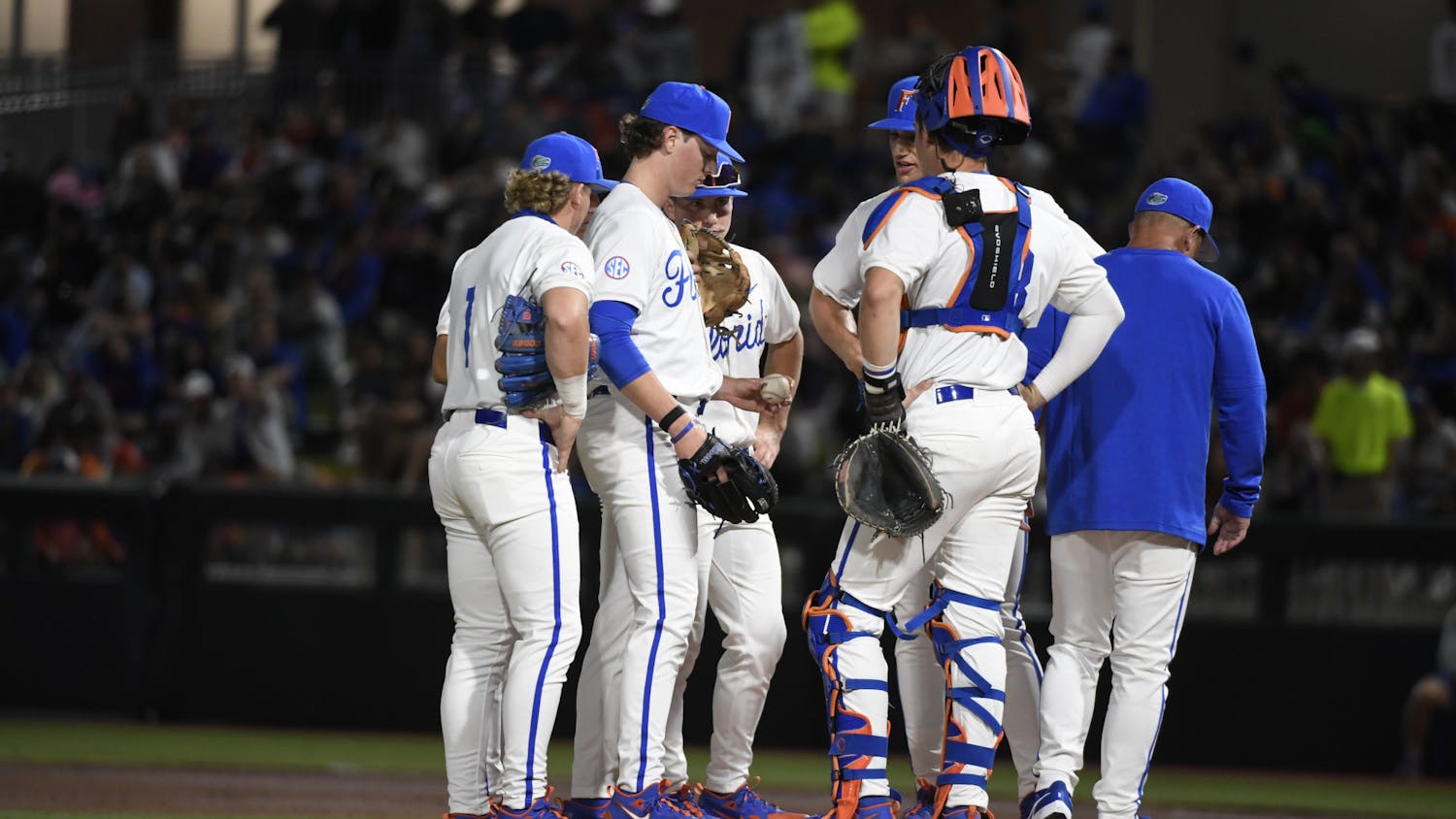In the decade since the height of baseball’s steroid era, cheating in America’s game has evolved. Gone are the days of rampant cocaine abuse, gambling controversies and league-wide PED usage. In their stead, the modern fan obsesses over the Houston Astros and their unique love for banging trash cans.
But while Houston took the torch of league-wide ridicule from baseball’s last great “villain,” Barry Bonds, the story of the 2017 World Series champions is but a drop in the bucket in the history of cheating in the modern game.
So let’s get this out of the way: your favorite team cheats. Rather than pointing fingers and clutching pearls, the average baseball fan should take interest in the game’s complicated relationship with “the rules,” for no better reason than making baseball more interesting.
Today, on the other side of a pandemic-shortened 2020 season, the league grapples with a familiar and increasingly problematic foe: sunscreen, boiled Coca Cola and, of course, spider tack.
Since baseball’s inception, pitchers have gone to extreme lengths to find ways to augment the baseball itself in an attempt to control a surface otherwise slick and difficult to grip.
In 1980, Seattle Mariners pitcher Rick Honeycutt was caught with a thumbtack taped to his finger in an attempt to scuff the ball for grip. His plans were foiled when, while wiping the sweat from his brow, he cut open his forehead and began to bleed profusely from the mound.
In 1987, Minnesota Twins pitcher Joe Niekro was suspected of using sandpaper to doctor the baseball in a game against the California Angels. When the umpire crew approached the mound to check Niekro, the pitcher hilariously attempted to throw the sandpaper onto the grass while emptying his pockets. He was immediately caught and suspended.
Sometimes cheating can be as enjoyable as it is enraging. More crucially though, doctoring balls is a longtime practice which evolved in the era of advanced analytics.
The widespread introduction of StatCast metrics revolutionized the game in 2015. StatCast saw teams switch their analytical focus from traditional assessments like batting averages and ERA to more advanced metrics like xwOBA and batted-ball exit velocity which normalized results while removing luck.
No individual statistic was as impactful as spin rate. For decades prior, teams and fans alike viewed a pitcher’s “nastiness” as an indefinable quality. When it comes to breaking balls, pitcher performance is easy to assess visually. Look no further than Tyler Glasnow’s physics-defying curveball.
But when it comes to fastballs, the pitch an average batter will see more than 50% of the time, spin rate became recognized as the best indicator of “nastiness.” Merely tracking velocity was insufficient, as the numbers reveal that throwing hard doesn’t necessarily produce swings and misses.
As it turns out, the more revolutions per minute on a fastball, the more difficult it is to hit. To demonstrate the effectiveness of spin rate as a benchmark, let’s examine 2020’s sultans of spin.
Trevor Bauer led the league in fastball spin rate, averaging an absurd 2817 RPMs on his four-seam fastball opposed to the league average of 2309. His fastball velocity ranked a mediocre 65th of 90 qualified hurlers who faced at least 200 batters in 2020, yet he posted a 1.73 ERA over 73 innings and won the NL Cy Young award.
Case in point, when it comes to measuring the effectiveness of a pitcher’s fastball, spin rate is king.
Bauer’s rise was meteoric. He signed a three-year contract worth over $100 million with the Los Angeles Dodgers this past offseason. He is set to earn over $33 million in 2021, the highest single-season salary in baseball history.
Bauer, along with the majority of pitchers in the league, had a secret. Through use of sticky substances, pitchers artificially inflated their spin rates to historic levels. StatCast revealed the secret to throwing an unhittable fastball, and pitchers quickly realized that sticky stuff was the key to increasing their spin rate.
In 2015, the highest average spin rate belonged to three-time Cy Young winner Max Scherzer. The Washington Nationals’ ace only averaged 2493 RPMS on his four-seamer, almost 350 revolutions slower than Bauer’s 2020 fastballs. By his own admission, Bauer reached those heights through the use of illegal substances.
The MLB recently placed Bauer on administrative leave while the LAPD conducts an investigation into allegations of sexual assault levied against the pitcher, and its possible he will never pitch again. However, his historic 2020 season and payout it produced remains the centerpiece of baseball's sticky situation.
For years, the use of illegal substances was an open secret. The commissioner's office declined to enforce the rules against their use, as the general wisdom suggested that pitchers were merely trying to control their stuff and not hit batters. But StatCast cuts both ways.
The narrative around sticky substances changed decisively as league-wide spin rate began rising in 2015. The sport realized, albeit slowly, that the substances pitchers were using not only improved their relative “nastiness” but also limited the number of balls put in play.
In 2019, offense exploded all across baseball. Across regular season play, hitters launched 6,776 home runs, dwarfing the previous record of 6,105 set in 2017. The culprit was the baseball itself, as astrophysicist Dr. Meredith Wills revealed changes in the manufacturing process significantly decreased drag. The commissioner’s office had juiced the baseball.
Cheating is always more complicated than it seems. The league juiced the baseball, and the result was increased offense, which tends to correlate with fan engagement and helps promote the game. Pitchers responded in turn, ramping up their use of illegal substances in the subsequent 2020 season in an attempt to level the playing field.
This time, however, the increase in spin rate and the flagrant behavior of pitchers was too drastic to ignore. In the same way they poured through Astros home games to find trash can noises, fans became increasingly cognizant of suspicious behavior by pitchers.
In this video, perennial all-star and three-time Cy Young winner Jacob deGrom is seen repeatedly touching the fingers on his right hand to the right side of his belt after throwing. deGrom’s performance against the Nationals that day? A complete game shutout with 15 strikeouts.
Yankees hurler Gerrit Cole has been even more obvious. These pitchers are some of the most exciting in modern baseball, with or without illegal substances, and their manipulations are highlighted not because they are the sole offenders, but because they illustrate how common the use of sticky stuff is in the modern game.
Why did the commissioner’s office decide to enforce the rules midway through the 2021 season? The answer is surprisingly obvious. In the first months of the season, offense was significantly lower than in years past, and league-wide batting average was .236 as of June 3, lower than any single-season mark in baseball history.
The league introduced enforcement protocols in the first weeks of June. Pitchers would be routinely checked for sticky substances between innings, and 10-game suspensions would be administered to any pitchers caught doctoring baseballs.
The enforcement worked to increase offense, and spin rate has cratered in the month since. Problem solved, right?
Not exactly. In a desperate attempt to inflate offensive numbers, the league began enforcement mid-season, a move which forced pitchers to change their routines in real time.
On June 14, the aforementioned Glasnow suffered a partially torn UCL and strained flexor tendon, an injury which shut down one of the game’s brightest young stars for months. In his post-game interview, Glasnow attributed the injury to the new enforcement protocols, which forced him to change his grip.
By and large, it seems pitchers are adapting to the “new” rules and hitters are enjoying the change. The commissioner’s office’s mid-season move had unintended consequences, however. Many fans believe pitchers finally got what’s been coming, as they cheated for years and are now suffering the consequences.
As we’ve seen, though, the line between cheating and not is never black and white. Cheating scandals serve as threads of an elaborate tapestry which comprises a century of American baseball. Cheating is as inseparable from the sport as the bat and the ball themselves.
Teams, players and owners have always and will continue to look for extrajudicial advantages on and off the field. Cheating in sports is not a debate between right and wrong or good versus evil, rather, it is the byproduct of the intersection between athletics and business.
Take Bauer, who was an undeniably productive pitcher before his adoption of sticky substances, but ascended to become the best pitcher in the National League when his spin rate exploded in 2020. His decision to use sticky substances earned him $100 million.
Is it fair to fault individual players for trying to gain a competitive edge when millions of dollars are up for grabs in free agency? It is entirely justified to say yes because they broke the rules. If we follow that logic, however, then by what rules are the commissioner’s office bound? Is juicing the baseball with the aim of increasing offense not an equally offensive crime?
Examining cheating through a moral lens is largely reductive, as the motivations of players, organizations and the sport itself so heavily revolve around dollars and cents rather than right or wrong. As it pertains to sticky stuff, enforcement of the rules is likely a net positive for the game. But the baseball community would be remiss if they do not recognize the existence and likely continuation of cheating in the sport.
So ditch moral appeals when talking about cheating in baseball, they do not apply. Instead, embrace baseball’s complicated history with “the rules.” Not only does it make the game more interesting for the casual viewer, it illustrates a fascinating intersection between competition, business and the growing role of advanced statistics in modern sports.
Contact Ryan Zehnder at rzehnder@alligator.org Follow him on Twitter at @ryan_zehnder.






